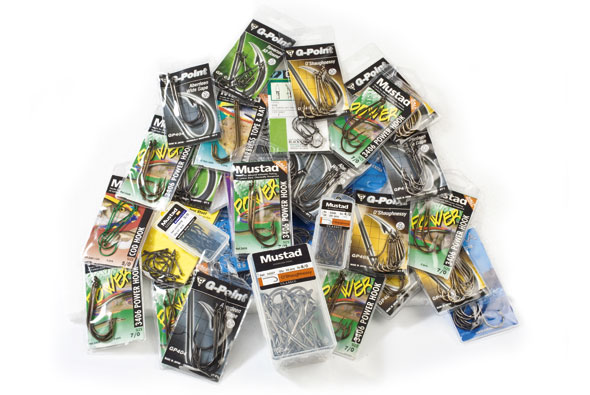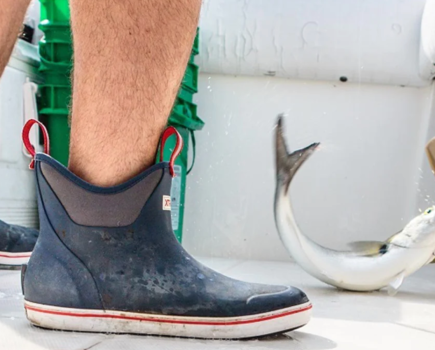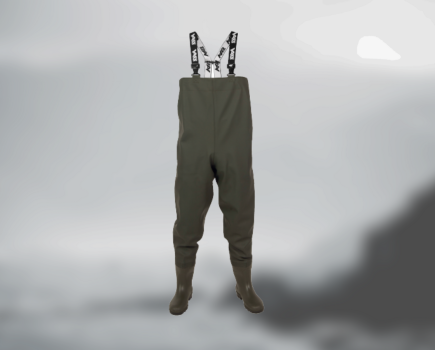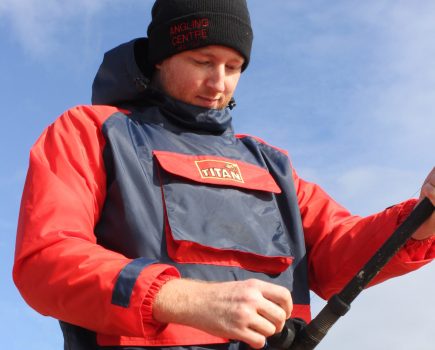If you use the wrong hook pattern or size of hook, the chances are that you will struggle to successfully catch your target species when sea fishing.
If you know what species you are likely to encounter, then you are already well on the way to choosing the correct hook. Equally important is the bait that the hook is going to hold.
Mounting a large cocktail of a crab and mussels should be done on hooks that have a wide gape, while a single sandeel will sit better on a long-shank hook. Hooks that have tiny barbs along the shank can help to hold a worm in position, especially during a powerful cast.
Hook sizes can be very confusing to some newcomers to angling.
The smallest hook you will probably encounter in a shore situation will be a size 8. Anything smaller than this is usually used by coarse anglers.
The sizes move up as the hook becomes bigger. For example, from an 8, the size will increase to a 6, then 4, 2 and finally a size 1. As the size increase continues, after a size 1 we come to a 1/0, then moving further up the scale to a 2/0, 3/0, 4/0, 5/0 and 6/0.
A hook that is bigger than a 6/0 is usually considered for targeting larger species such as sharks and conger eels, simply because they may be needed to hold a large fish bait like a whole mackerel flapper or two or three whole squid.
KNOW YOUR HOOK
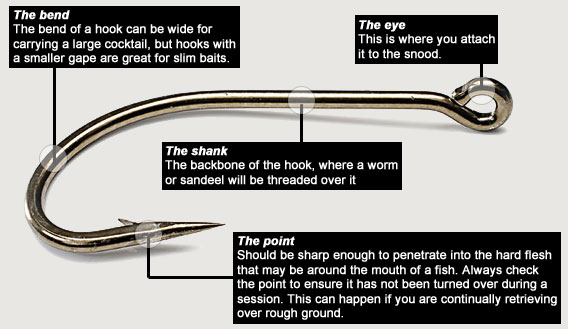
One of the very strongest knots to use to tie hooks is thehalf blood knot.
Match the size of bait to the hook
Depending on what species you are targeting, you must match the hook size to the bait you are using.
For example, flatfish prefer a crab bait or a bunch of maddies tipped off with a sliver of mackerel. Limerick hooks have a wide gape, and a size 2 can easily hold a decent peeler crab bait and still have enough of the hook point showing.
An Aberdeen pattern in a size 2 or 1 is ideal for threading several small ragworms with their tails left hanging. A small piece of squid or mackerel can then be hung on the point.
Smaller round species, such as pout and rockling, can be caught using Aberdeen patterns, but even smaller still in a 4 or a 6. Larger round fish, such as cod, pollack and coalfish, like a larger bait and a size 2/0 up to a 6/0 will easily fit into their larger mouths.
Smoothhounds and rays have relatively small mouths compared to their size, so a size 1 to 2/0 will be adequate. The pattern depends on whether you are using crabs or sandeels.
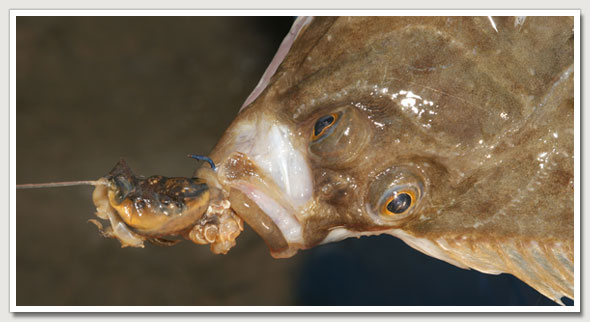
Know the common hook patterns Five types you should have
Q In the event of a fish being deeply hooked, are there any hooks that might be safely left in the fish to corrode away naturally?
A While the use of barbless hooks would probably be better for catch and release purposes, they are not really effective. Tides and wave movement that occur on the shore can make keeping a fish hooked on a barbless version difficult.
If a fish is deeply hooked and you intend to release it, then you should always cut the snood as close to the hook as possible. Forcing your fingers down the throat of a fish or pulling at the hook will probably result in its subsequent death.
Hooks that are best used for this purpose are modern, chemically-etched carbon types. Forged steel or thick stainless steel hooks should not be left in a fish.
There have been many arguments as to whether or not hooks left in a fish actually corrode away, but the general feeling among anglers is that the acids in a fish’s gut help to pass the hook. Larger hooks may take longer, so if you intend to practice catch and release during a session, use smaller patterns that if left may even be passed through the fish’s digestive system.
Another alternative would be to use a circle hook, as these tend to hook a fish in the corner or scissors of the mouth. Commercial longliners use them and they make unhooking a fish much easier. On the other hand, circle hooks are more difficult to bait up with delicate worms or sandeels.
Disgorgers are very effective. Now that match anglers are adopting catch and release in the majority of contests, a high percentage of fish are going back alive with no need to leave the hook in them.

